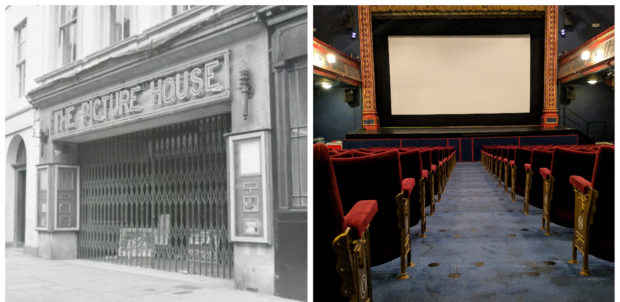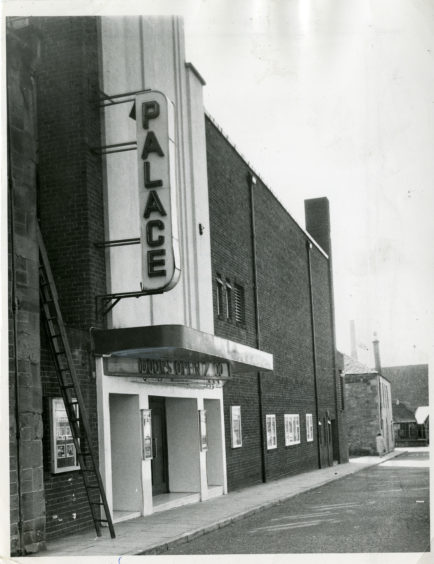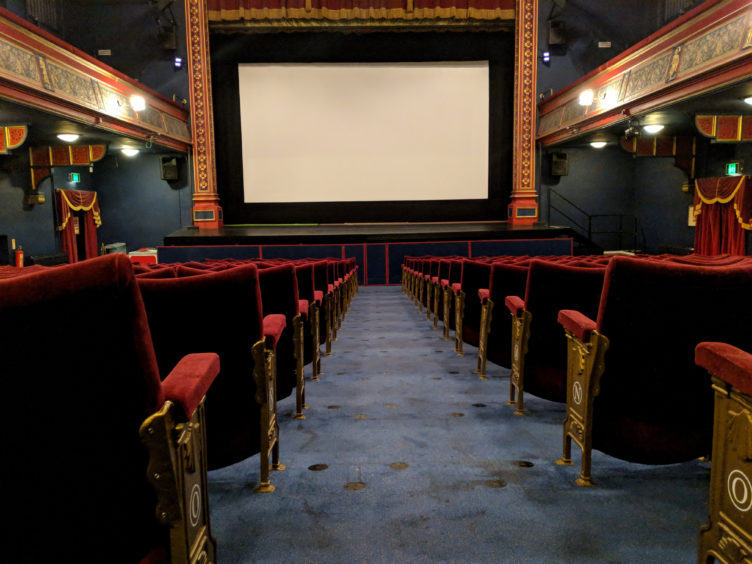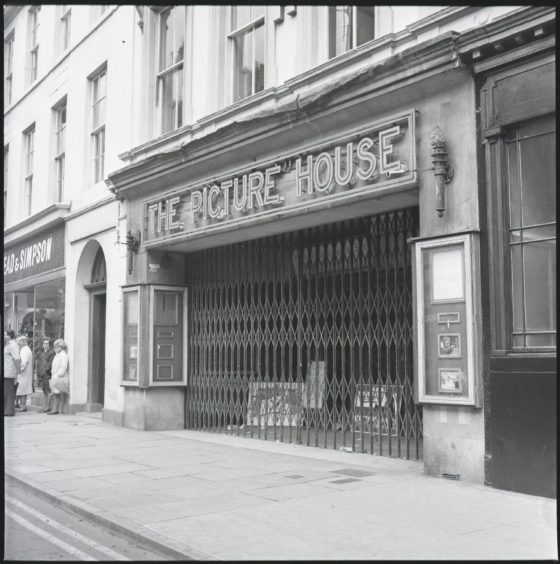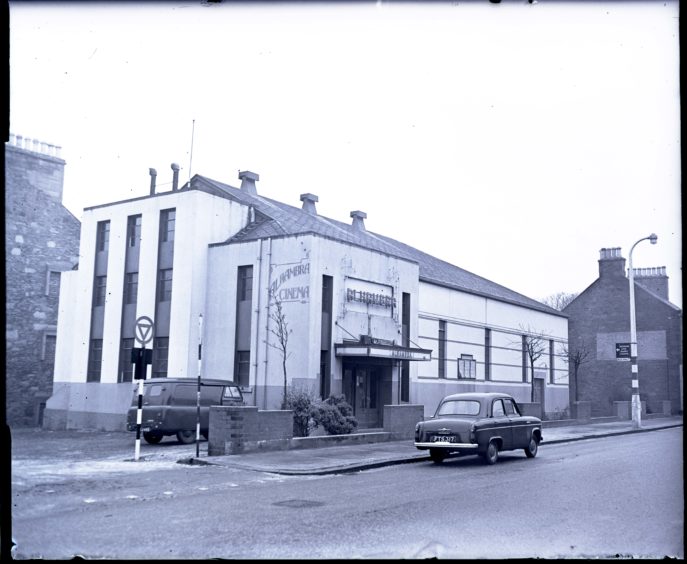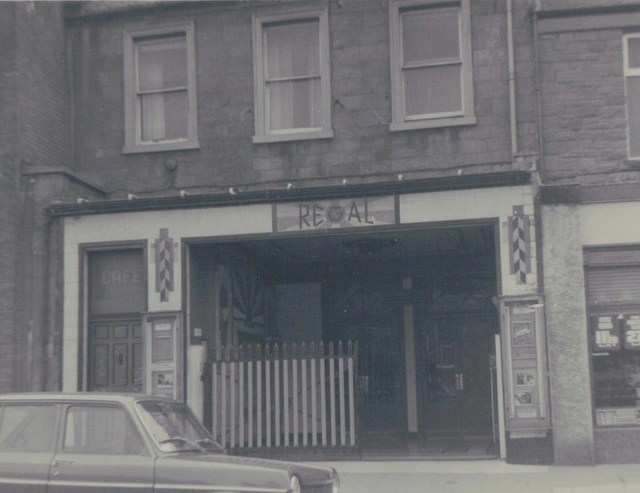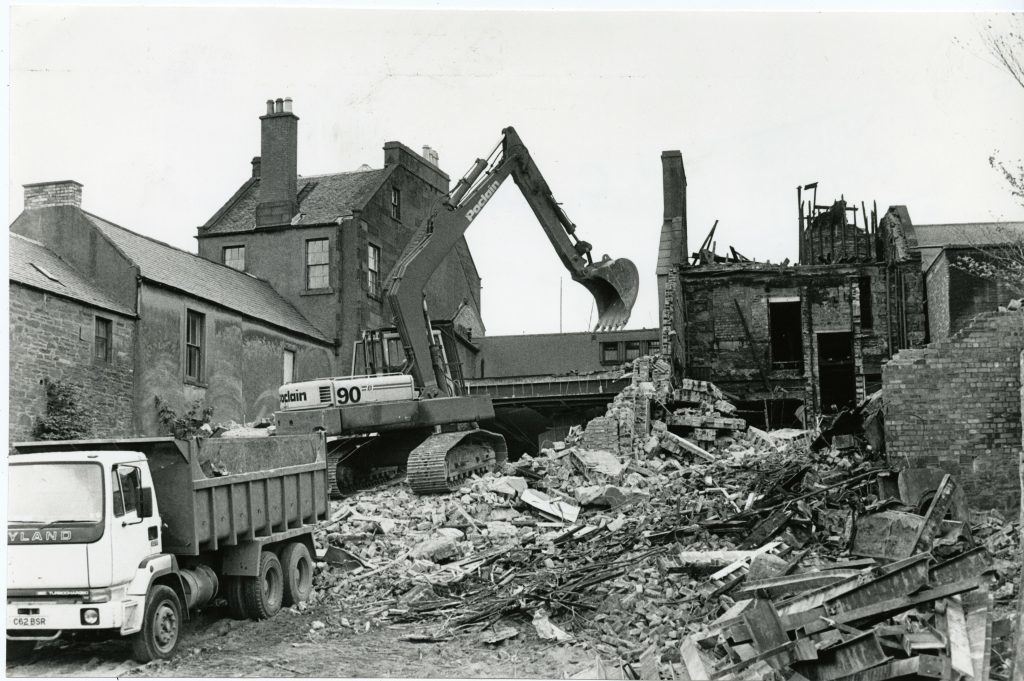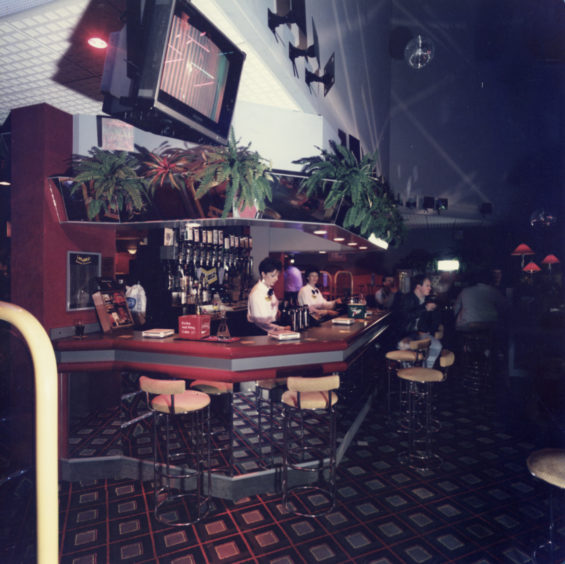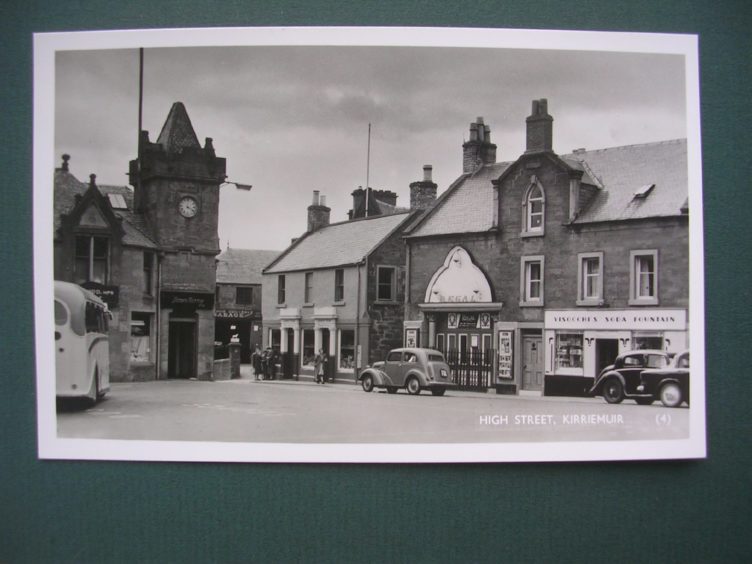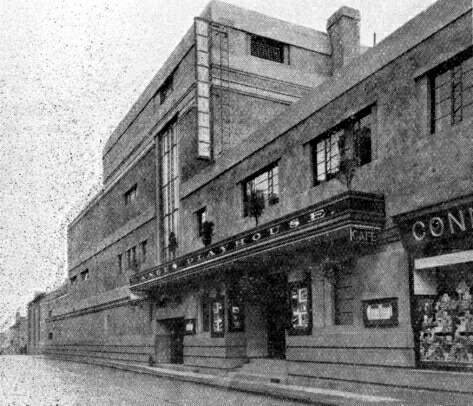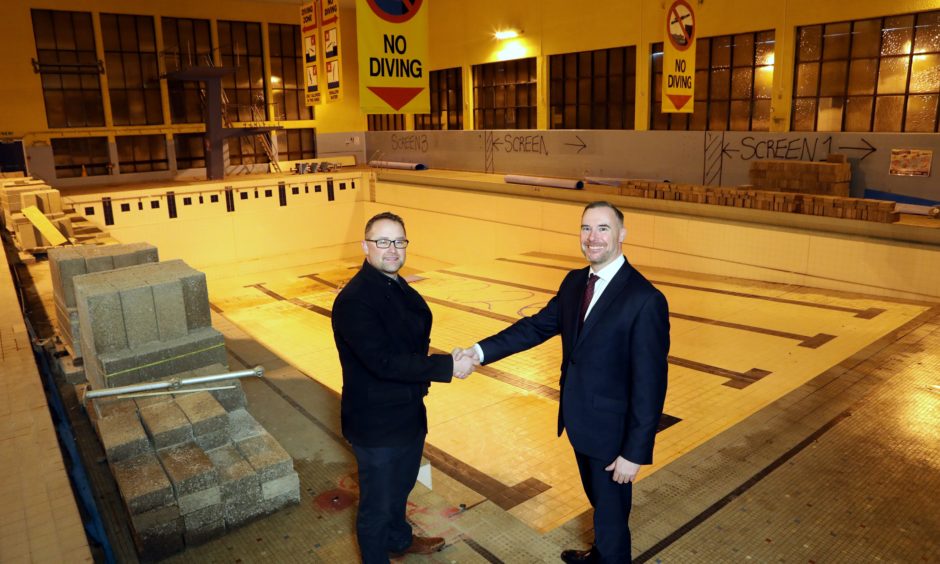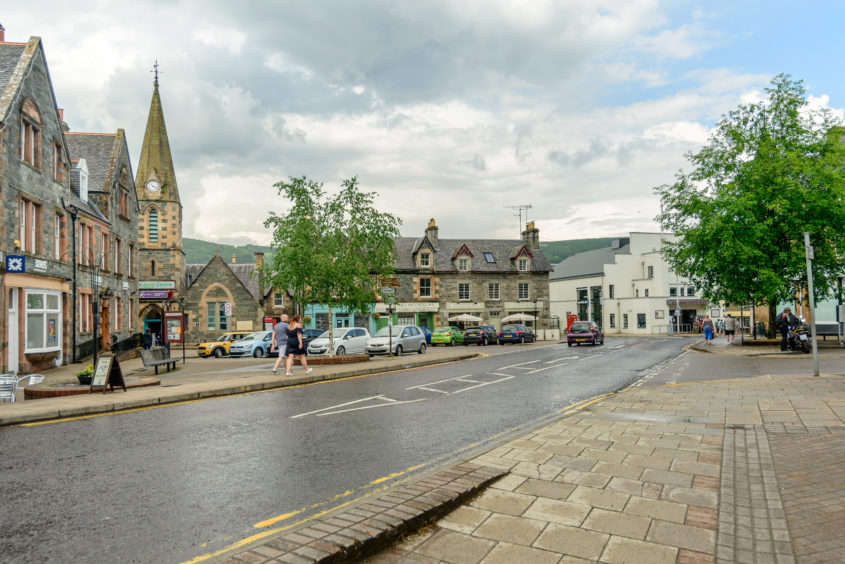In its heyday Angus was home to no less than 14 picture houses in the golden age of cinema.
Now the county has seen a resurgence in cinema-going which will be further boosted next year with the opening of the £3.2 million Montrose Playhouse.
Before TV and the internet were the foundations of entertainment, there was a market for a plethora of picture houses.
Arbroath boasted three, there were two each in Montrose, Forfar, Brechin and Carnoustie and one in Kirriemuir and one in Monifieth.
The memories of watching silent movies and big blockbusters in some of the county’s finest picture houses definitely deserve a second viewing.
The Palace
The Palace in Arbroath’s James Street was the only ABC cinema in Scotland designed by William R Glen.
Long before that the site had housed a church — it was abandoned as a place of worship in 1889 — and became a variety hall, known as the New Victoria Halls, a dance hall, a picturedome and ‘old’ Palace Theatre.
It was known locally as the Gaff, and variety and cinematograph shows continued there during the First World War.
The old Palace closed down in June 1939.
The demolition of the building began to clear a site for the modern cinema which was built by Associated British Cinemas Ltd and opened in May 1940 by Provost Sir William Chapel.
The new picture house was the most modern of its kind in the country and also the largest in the district, having been planned to accommodate 1,500 people.
Of all Glen’s many cinemas for ABC, the Palace was the only one in the entire UK to survive right up until its demolition in 1992 with its original external neon sign, canopy and all the original auditorium and foyer lights and fittings.
From 1984, it operated as a full-time bingo club, but was taken over by Border Movies in 1985 and films were reintroduced on the balcony seating level only.
The stalls area became a roller skating rink in 1988 before the cinema closed in 1990 and Hillcrest Housing Association bought the building from Granada Leisure.
The building was demolished to make way for general needs housing built by the Hillcrest Housing Association which worked closely with Angus District Council before the commencement to allow the retrieval and subsequent preservation of any artefacts or items of local historical interest from the building.
The Olympia Picture Palace
Designed by Dundee architect Charles Edward in 1855 and originally a Corn Exchange, the Olympia Picture Palace opened as a cinema in Market Place, Arbroath, in July 1912.
It was renamed the Olympia Theatre in the 1930s when talkies were installed before a wide screen was introduced in 1955.
The Olympia closed in 1959 and the B-listed building is now a Wetherspoons pub.
The Picture House
The Picture House, in Arbroath’s High Street, with seating accommodation for 1,036, was built for the Arbroath Cinema Co Ltd and opened on Christmas Day 1930 behind the Royal Hotel.
It boasted two foyers “tastefully decorated in plastic paint” and “the latest talkie apparatus”.
It was sold to the cinema circuit of JB Milne in 1968 and, when he died two years later, it was acquired by Kingsway Entertainments Ltd, which also owned the Palace.
In 1972 Kingsway Entertainments concluded that falling attendances meant that the town could not support both outlets and the Picture House closed as a full-time cinema and became a bingo hall.
The Alhambra
The Alhambra Cinema in Monifieth was opened in 1936.
The Alhambra was not the first picture house in Monifieth but the replacement of one sited in Tay Street which burned down in the 1930s.
The cinema was housed in a corrugated iron building which had added sound effects as those children who did not have the entry fee would run a stick along the outside iron-ridged walls creating a noise nuisance.
The Alhambra was operational until 1960, then becoming the Alhambra Garage, and is now the site of the High Street Car Wash which was formerly a fuel filling station.
The Pavilion
The Pavilion in Queen Street in Forfar was opened prior to 1934.
The cinema had a 25 feet wide proscenium, a stage 25 feet deep and three dressing rooms.
It had closed by 1980 before it was converted into a bingo club which closed in 2009.
The bingo hall and electric sub-station were levelled, with three blocks of two-storey flats built in their place.
The Regal
The Regal Cinema in East High Street — the last in the town — succumbed to the bulldozers in August 1987 following a devastating fire.
The Regal was opened in 1932 by Provost Hanick and entrance was through a former shop with the auditorium built at the rear.
The picture house shut its doors in 1983 after the final show, the fantasy epic Krull.
Its “tinderbox” interior ignited on a Saturday teatime in the biggest fire to be seen in a generation.
Six fire tenders and 35 firefighters from Forfar, Dundee, Kirriemuir and Brechin attended the scene, and more than 800 gallons of water a minute were directed onto the flames.
No evidence remains of the former East High Street favourite, apart from the rebuilt home of M&Co and local memories.
The King’s
Brechin also had a Regal as well as a King’s cinema.
Both were owned by Strathmore Picture Houses.
As falling attendances hit the industry, the Regal restricted opening to Friday and Saturday only.
It closed in January 1963 leaving the King’s as Brechin’s only outlet.
The Regal in City Road was demolished in 1971 to make way for housing.
The King’s opened in 1927 with 820 seats.
Seating was provided in stalls and circle levels.
It had a 20 feet wide proscenium, and was equipped with a RCA sound system.
The King’s Cinema was closed in October 1985.
It was converted into a nightclub named Arena, and was later Flicks.
Flicks was at the forefront of the British nightclub scene in the 1980s and 1990s.
Bus parties emptied out on to the High Street from as far away as Newcastle, and promoters packed them in with the promise of seeing that generation’s biggest singers, soap stars and personalities.
After rebranding and closing in the early 2000s, the club has languished on the Buildings at Risk Register.
Kirriemuir Cinema
A cinema was built at the rear of a two-storey house in Kirriemuir High Street in 1911.
This outpost of the JB Milne empire closed for a while and reopened again in 1931 after being equipped for talkies.
The Regal was taken over in 1961 by the current owners Visocchi’s and they continued to operate the Regal until it closed in 1969.
The Regal, Carnoustie
The Regal Cinema in Dundee Street in Carnoustie was a conversion of a former church which opened in the 1930s with 900 seats.
The owner was The Angus Cinema Company Ltd and it was also called the Dominion at one time.
It closed around 1958 and became a bingo club.
The building became the All-Stars pub and later Shotz before the premises closed.
The Regal is now Millers of Carnoustie.
The Pavilion, Carnoustie
The Pavilion opened in 1912 as Park Avenue Variety Theatre in a purpose-built hall before it was renamed.
The building was demolished in the early 1980s.
The Angus Playhouse
The original Angus Playhouse opened in 1932 in John Street, Montrose, as a sister cinema to the playhouse in Elgin.
Both were designed by the son of Prime Minister Ramsey MacDonald and shared several decorative similarities including the wood panelling below the dado line in the foyer and auditorium as well as the procenium arch and small stepped stage.
MacDonald’s design was impressive enough to be featured as an excellent example of its type in the 1936 publication ‘Modern Cinemas’, produced by the Architectural Press.
Although built for the Angus Playhouse company, the cinema was run by Caledonian Associated Cinemas.
The original projection equipment was Simplex projectors and RCA sound, later replaced by BTH throughout when it was taken over by JB Milne Theatres around 1958.
By 1971, the cinema had still never been refurbished, and almost everything – seats, lighting and decoration was intact if somewhat run down. Seating then was 308 in balcony and 729 in the stalls.
The Playhouse closed on August 27, 1977, showing ‘Bugsy Malone’ to a busy final audience of over 600.
The building sat empty until 1991, when it was demolished after a fire.
A development of housing is now built on the site in John Street and nothing now remains of the old Angus Playhouse.
The King’s Cinema in Hume Street opened in 1919 in a converted live theatre.
Seating was 781 and it became an early ABC before being sold to JB Milne in 1958.
It closed in the 1960s and spent many years as a bingo hall.
The building is now a pub called The Picture House.
Looking to the future of cinema in Angus
Bancon Construction Ltd are currently working to convert the former swimming pool in Montrose into a permanent three screen cinema and arts venue for the area.
The construction was delayed due to Covid–19 but works are now back on track with an approximate opening date of September/October 2021.
Montrose Playhouse Project chairman and founder David Paton said the team are now looking to the future and the exciting prospects the facility holds for the area including arts and social programmes, working with educational institutes and local cultural facilities to enhance the cultural offer in Montrose and Angus through film and the arts.
The team have also managed to save and remake some of the original art deco seats from the Angus Playhouse which will become a feature in the facility’s Reel Cafe Bar.
Over the past 10 years or so Scotland has seen a surge in small town centre cinemas returning – some commercially operated like Chalmers in Arbroath and some community-based like the Montrose Playhouse, The Birks in Aberfeldy and Campbelltown Picture House.
Mr Paton said: “I’m incredibly proud of everything the team has achieved over the past few years.
“Not just this team but members who have come and gone and helped during our journey.
“We also have a huge thank you to say to the community who believed in the project from the start and supported us the entire way.
“The Playhouse will be a unique facility in Angus providing not only community and art space but a three screen cinema, a modern café bar, retail space and most importantly a great range of social programmes that we hope will help various disadvantaged people in the area.
“Lots of people ask about the future running of the facility.
“The Playhouse will be overseen by a team of local trustees governed to run the registered charity and who will employ staff to run the facility and ensure quality is maintained whilst all profits are invested back into the building and community programmes.”
